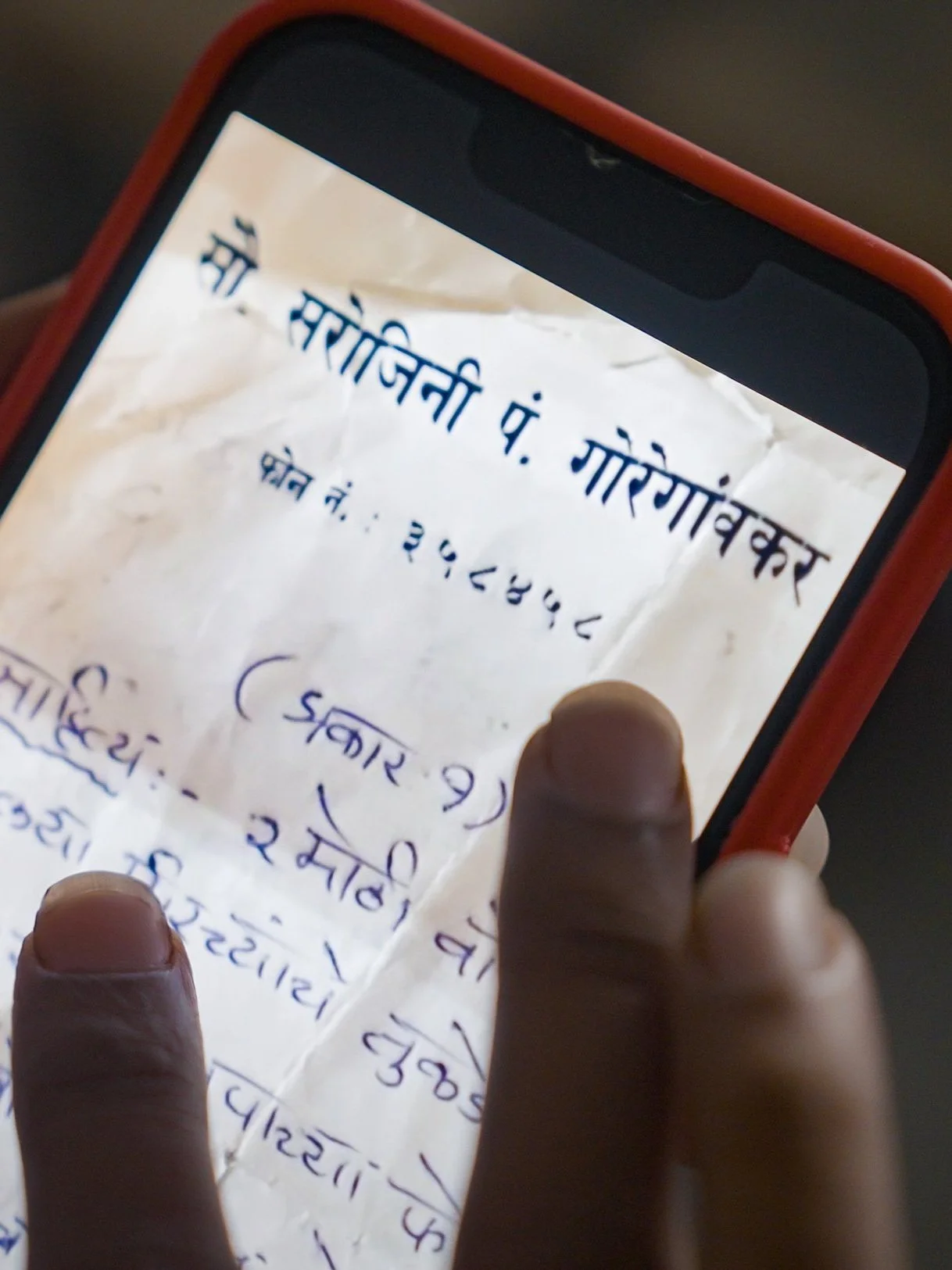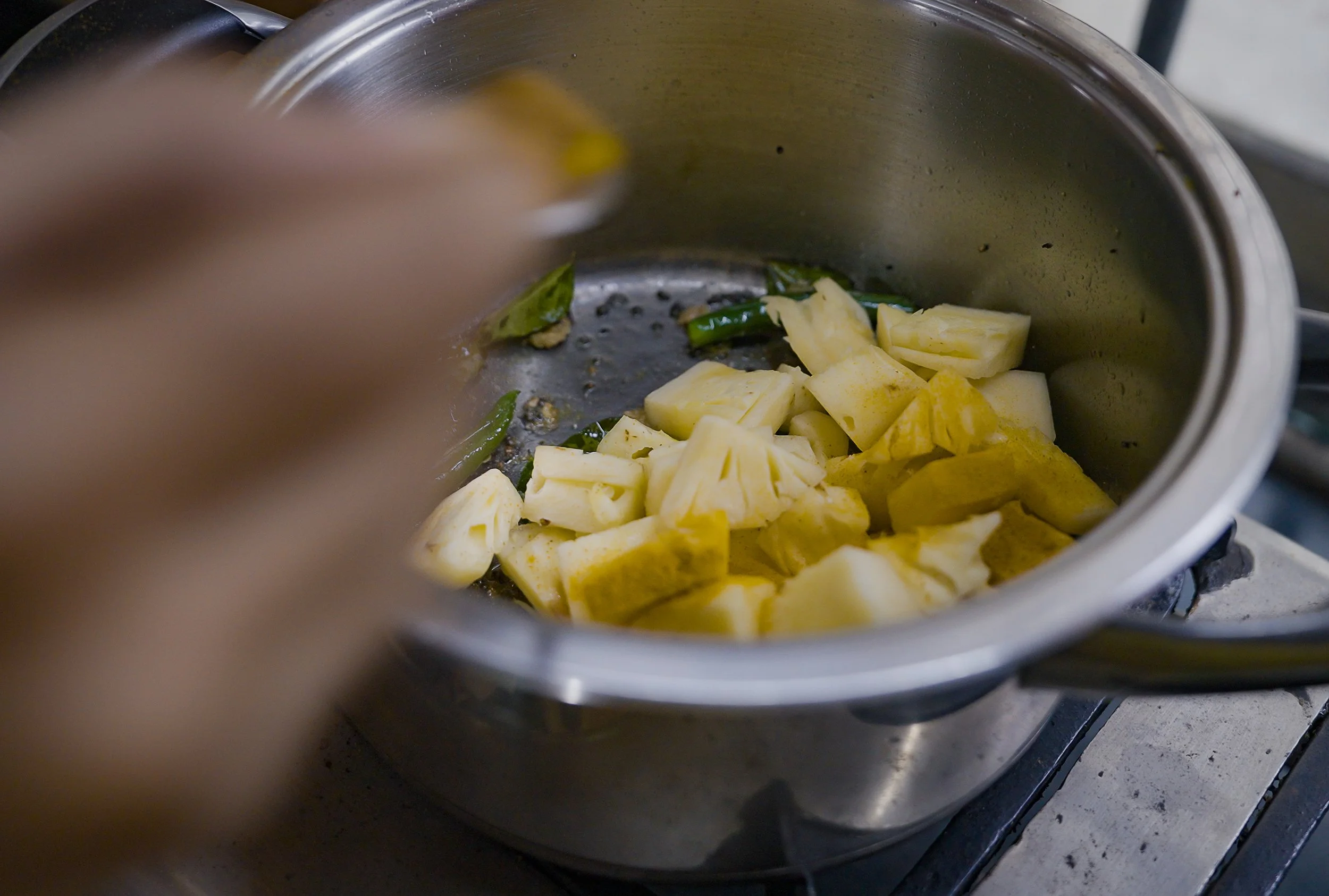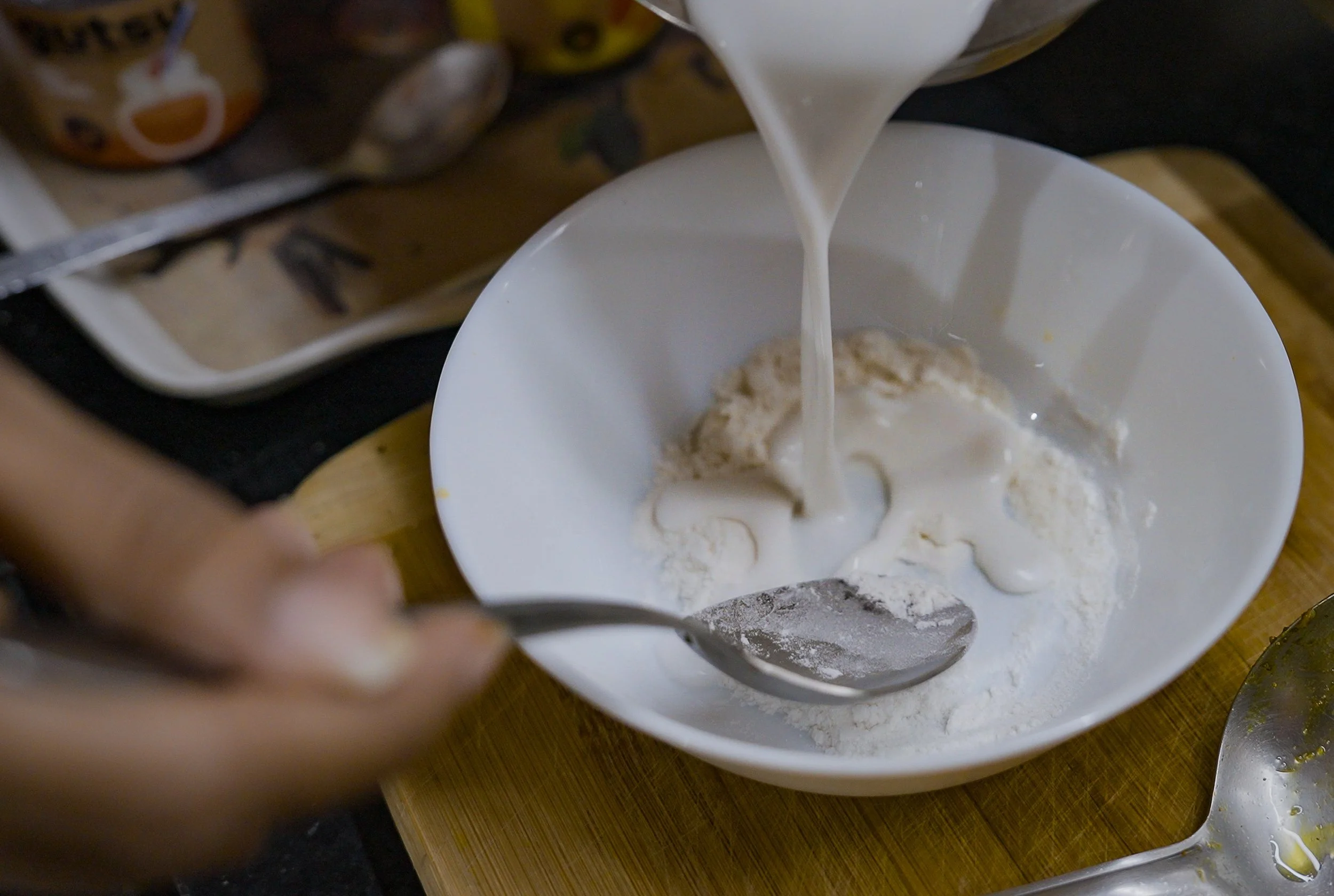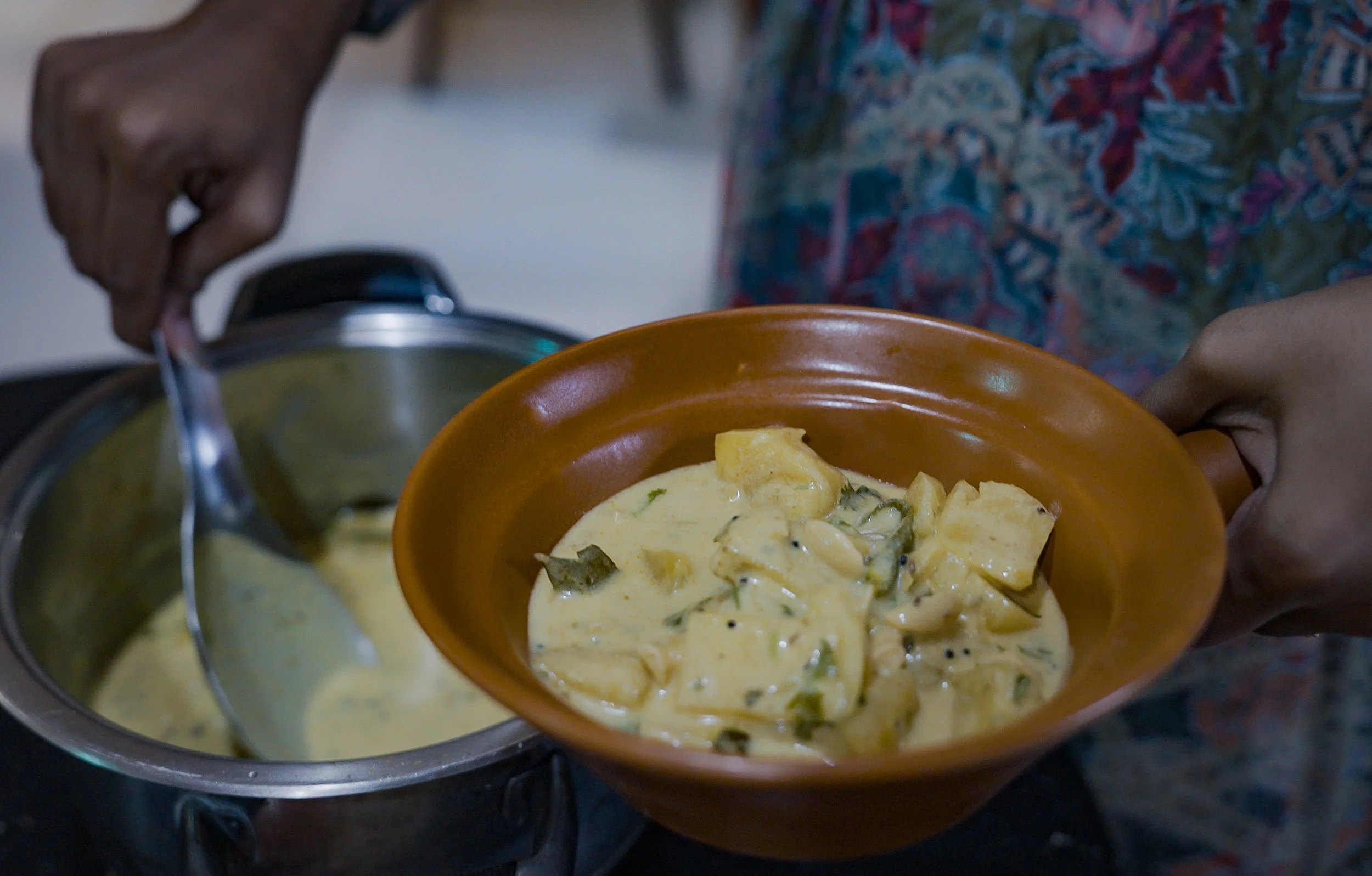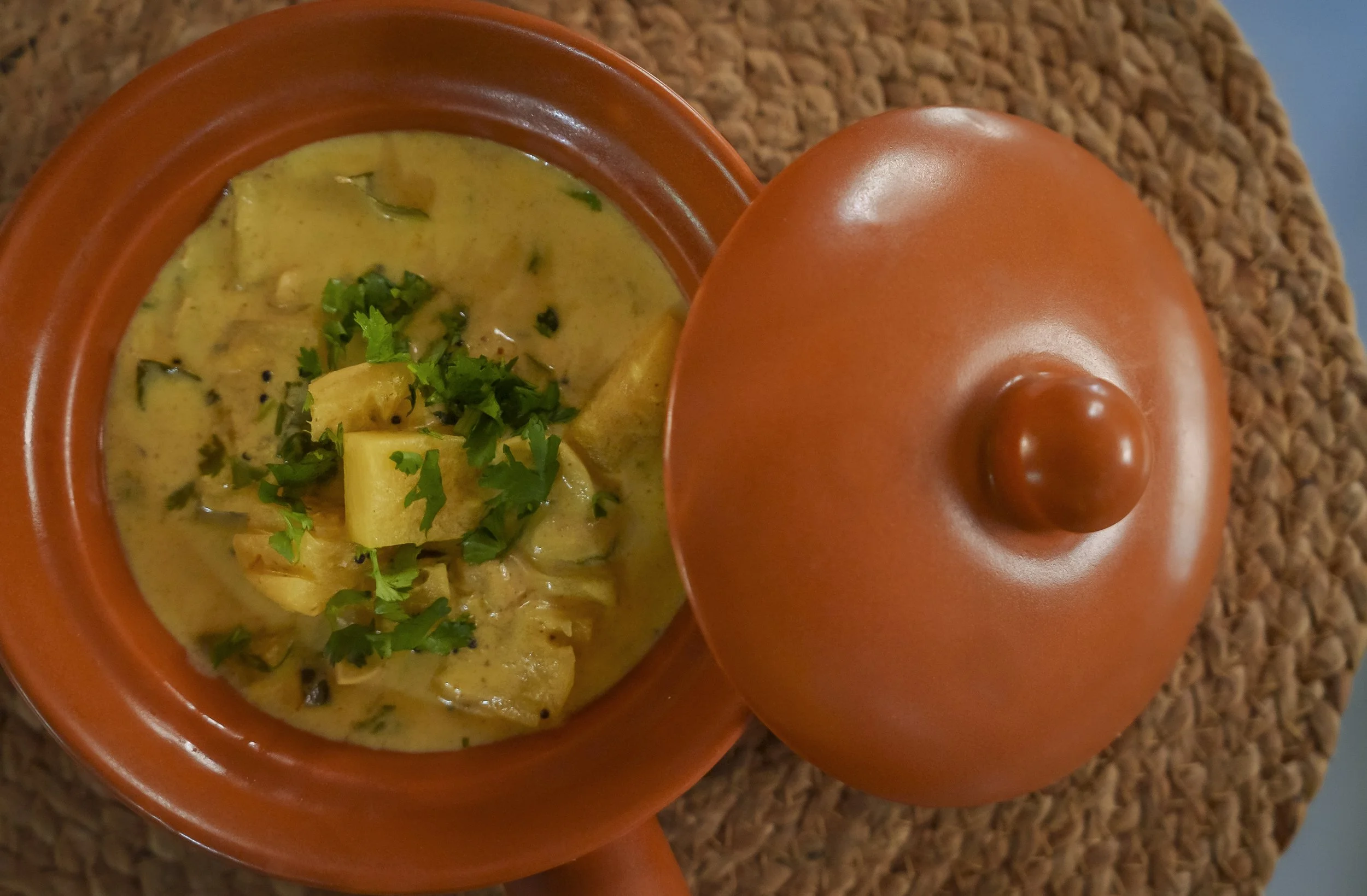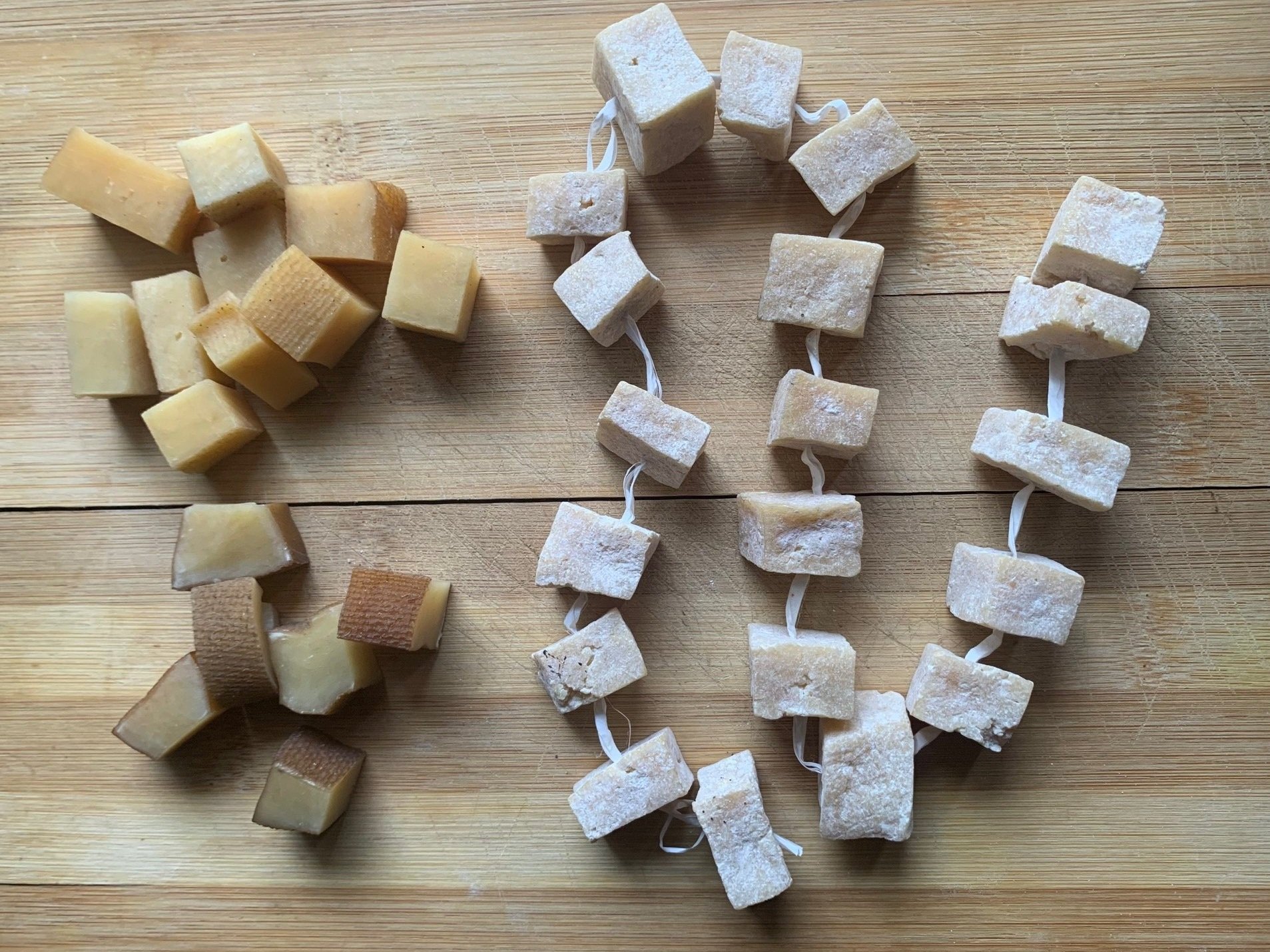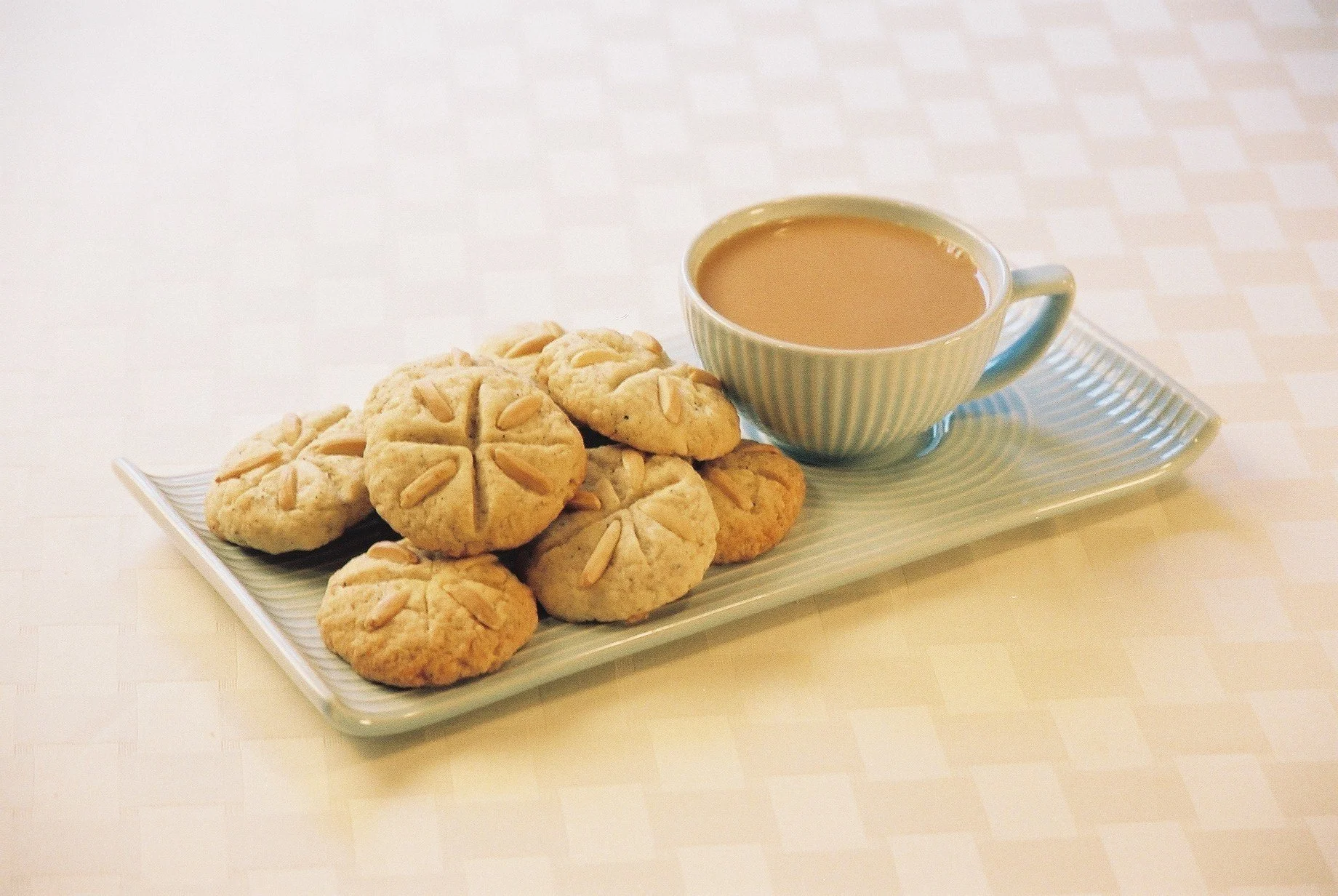Dhani Goregaonkar's Pineapple Curry is an SKP Wedding Special

At Goya, celebrating home cooks and recipes have always been at the heart of our work. Through our series, #1000Kitchens, we document recipes from kitchens across the country, building a living library of heirloom recipes that have been in the family for 3 generations or more. In this edition, Krutika Behrawala talks to Dhanashree Goregaonkar and learns about a traditional Somvanshi Kshatriya Pathare wedding dish called Ananasachi Amti.
This season’s stories are produced in partnership with the Samagata Foundation—a non-profit that champions meaningful projects.
Pineapple-on-pizza is a dealbreaker that can derail most Gen Z love stories. But for 26-year-old Dhanashree Goregaonkar or Dhani, the sweet fruit nestled in savoury warmth is not sacrilege. As the soul of ananasachi amti, a glistening pineapple curry, it’s a sacred bridge that connects her to an ancestor she never met and her Somvanshi Kshatriya Pathare (SKP) roots.
I first witnessed Dhani bring this dish to life in early 2019 at the Paisley Experience, a farmside dining venture that she had just launched with her mother Naina in Alibaug. Back then, Naina had helmed the cooking while Dhani played the supporting act. Six years later, when I meet them at their sprawling heritage bungalow in south Mumbai’s Gamdevi precinct, the roles have reversed. Now a chef and graduate from Dadar’s Institute of Hotel Management, Dhani oversees the operations of the Paisley Experience as her mother takes a backseat. With her demure boss-lady presence, she passionately manages every detail from leading a team of local women who prepare the dishes to taking in catering orders and also, curating guest experiences including museum visits in Alibaug. At home too, she leads the cooking with confidence.
Their spacious yet understated kitchen mirrors Dhani’s quiet honesty. A two-burner stove basks in the sunlight filtering through closed glass windows. The stainless steel containers line up neatly on black marble countertops, and modern appliances coexist with a brass mortar pestle and wooden coconut scraper — heirlooms passed down from her great-grandmother or Panji Ajji, Sarojini Goregaonkar. It is here, she tells me, that her Panji Ajji would have stood in the 1950s and early ‘60s, cooking ananasachi amti. “Living in the same house, I feel like she’s watching over me. So, I sincerely follow the instructions in her recipes,” she chuckles.
The Goregaonkar family lives in a heritage bungalow in Gamdevi.
Dhani and her mother, Naina, run a farmside dining experience called Paisley Experience.
For long, the ananasachi amti has been a celebratory dish, reserved for special occasions among the Goregaonkar family, and in the SKP community. Despite the community’s deep love for seafood, explains Dhani, traditional SKP wedding feasts excluded meat. “The next most sought-after dish was the pineapple curry. Back then, pineapple was a delicacy — seasonal, rare and considered exotic — making the amti even more special.”
About 300 years before the Portuguese brought pineapple to India, the SKPs are said to have migrated with Raja Bhimdev (or Bimba) to make the seven islands of Bombay their home. Noted as one of Mumbai’s original inhabitants, their surnames — Dadarkar, Parelkar, Mahimkar, among others — carry the imprint of their early settlements. Dhani believes that the community flourished because of their innate openness to change. “We adopted seafood-eating habits from the native Kolis and Agris. We adapted to working with the British. We’ve always embraced new ideas. Our love for pineapple feels like a natural extension of that adaptability.”
Dhani’s lineage traces back to her great-great-great-grandfather, Harishchandra Goregaonkar. An eminent contractor for the British, he built several of Mumbai’s landmarks including their current home — Harishchandra Smruti — where he moved from Goregaon in 1899. His bust sits in the living room like a guardian of their legacy with antique artworks, a writing desk and a sitar — passed down through generations of sculptors, architects, and solicitors in the family.
But Dhani’s most cherished possessions are cookbooks with weary spines and weathered pages — an early edition of Rasachandrika in Marathi and Hazaar Paak Kriya, a compendium of Maharashtrian recipes, bearing her Panji Ajji’s initials. Dhani runs her fingers gently over the fragile pages. Her eyes catch the recipe for cauliflower che sambhare. The footnote suggests that cauliflower can be swapped with pineapple. “This forms the base of Panji Ajji’s ananasachi amti,” she says. “But she tweaked the ingredients and steps, making the recipe uniquely hers.”
Dhani’s lineage traces back to her great-great-great-grandfather, Harishchandra Goregaonkar, who built several of Mumbai’s landmarks including their home, Harishchandra Smruti.
Dhani’s cooking is influenced by her great-grandmother or Panji Ajji, Sarojini Goregaonkar.
A collection of old cookbooks with weathered pages.
The recipes from her Panji Ajji are now digitised and in her inbox.
Dhani got acquainted with this recipe while on a quest to dig deeper into her community’s dishes to showcase at Paisley Experience. She struck gold at one of her relatives, Pratima Goregaonkar – her great-grandmother’s daughter and Mimmi Ajji (her grandfather’s sister) to Dhani. “Mimmi Ajji settled in America after marriage. Since she was a novice at cooking, Panji Ajji wrote detailed recipes in the letters that she would send her. These letters to the daughter became a written record of our family recipes,” she beams. This treasure trove is now digitised in Dhani’s inbox. The letters include SKP specialties like bharlela paplet (prawn pickle-stuffed pomfret), seafood kalwans, chinchecha saar (chilled tamarind curry), kolambi bhaat (prawn pulao) and the lonche.
For Dhani, these recipes not only preserve a way of life but also offer a rare glimpse into her great-grandmother’s style of cooking, effort and taste. “Panji Ajji used only whole spices or freshly powdered ones. No premixed garam masala. So, all her recipes begin by first roasting the jeera and then powdering it. That’s what I’ve done too,” she says.
Dhani cooks with patience, letting each ingredient work its magic in the curry. Guided by both her Panji Ajji’s spirit and foolproof recipe, she senses perfectly when it’s time for the next step.
It starts with choosing the right pineapple. “It is crucial.” The pineapple has to be sweet but also slightly tart, firm but juicy. In a heavy-bottomed pot, she adds ghee and oil. Before the fats heat up, she tosses in whole spices — black pepper, cloves, and cinnamon — as it helps infuse their flavours better. Mustard seeds splutter next, followed by green chillies, ginger, asafoetida and curry leaves plucked fresh from her garden. The stage is set for the hero’s entry – the pineapple.
Panji Ajji’s recipe calls for exactly three tablespoons of coconut milk to be mixed with rice flour into a slurry, to thicken the curry. Dhani sets the portion aside, pouring the rest of the freshly extracted coconut milk into the pot. The recipe also features cashews. “Since it’s a wedding dish, we go heavy on the cashews,” she grins.
Like the SKPs, several coastal communities have their versions of savoury pineapple curry. One such is the ananasache sambhare made by the Pathare Prabhus — among the original inhabitants of Mumbai who are considered to share history, culture, and culinary links with the SKPs as “cousin communities”. But there are subtle differences, Dhani notes. “We don’t use onions. Instead of gram flour, we thicken with rice flour because it’s more common in our pantry.”
Even among the SKPs, the Goregaonkar version stands apart — notably for the absence of Pachkalshi masala. It’s a staple, aromatic spice blend of 32 ingredients including lentils in the SKP kitchens. Its name comes from the community’s moniker, Pachkalshi, rooted in the practice of incorporating five metal pitchers or vases in their wedding ceremonies. Dhani’s great-grandmother would pound a fresh batch every summer. “But she reserved this masala only for mutton, chicken, and seafood – never for egg or vegetarian dishes,” Dhani says. “When I married into the family,” Naina recalls, “I was often told, ‘Aaplyat asa kartaat’ — this is how it’s done in our family.” A dictum that now passes, gently but surely, to Dhani.
At the table, alongside egg curry and prawn lonche — other treasures from her Panji Ajji’s handwritten trove — it is the ananasachi amti that sings the most soulful melody. Ladled generously over ghee-laced rice, every bite is a tender ode to a matriarch whose spirit lingers in the delicate notes of spice and sweetness.
Dhani smiles, her eyes sparkling. “Though I never met her, I feel like I’ve grown closer to her. I love how a simple recipe can do that. It’s magical, isn’t it?”
It truly is.
PANJI AJJI’S RECIPE FOR ANANASACHI AMTI
Serves 4-5
Ingredients
1 cup fresh pineapple chunks
Milk of 2 coconuts
12-14 split cashew nuts
1 tbsp rice flour
¼ tsp red chilli powder
½ tsp cumin powder
¼ tsp turmeric powder
1 tsp ghee
1 tbsp oil
Salt and jaggery to taste
Tadka / Phodni (tempering):
2 pieces of cinnamon
3-4 cloves
4-5 whole black pepper
¼ tsp mustard seeds
3 green chillies chopped in three pieces each
5-6 curry leaves
1/4 inch ginger, finely chopped
A pinch of asafoetida
Method
In a pot, add ghee and oil. Heat gently till it spits. Add the whole spices and all the tempering ingredients.
When ready, add pineapple, turmeric, red chilli powder and cumin powder. Stir well, cover for 5 minutes and simmer.
Add the coconut milk (reserve about 3 tbsp of coconut milk for later) and salt. Gently simmer till it boils.
Mix rice flour with the remaining coconut milk. Add it gently to thicken the amti.
Add cashew nuts. Let it simmer for 5-7 minutes.
Remove from the heat and leave it covered for 15-20 minutes.
Garnish with chopped coriander.
Serve with warm chapati or freshly cooked rice.
Note: Adjust the levels of jaggery or add a dash of lime juice, as per taste.
Words by Krutika Behrawala. Images by Saurabh Nandkishor. Illustration by Ernestine Klecz.
Special thanks to our partners.
ALSO ON GOYA





